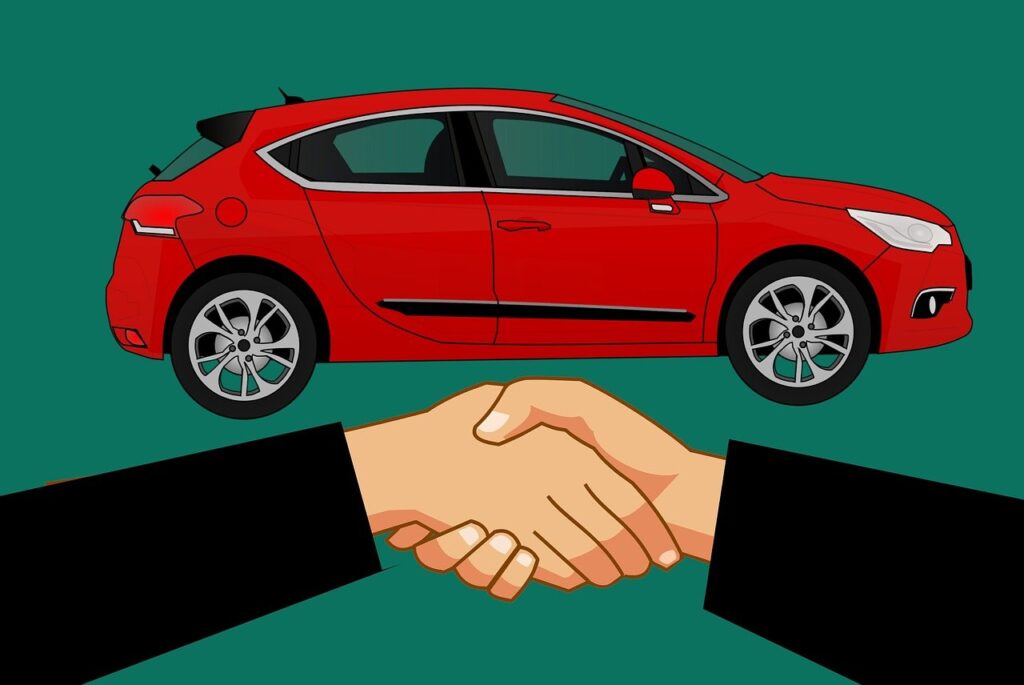Auto insurance is a part of being an American vehicle owner. It’s a legal requirement and financial protection in case of accidents, theft or other damages. Auto insurance can be confusing with all the types of coverage and factors that affect the cost. This in-depth blog will cover auto insurance definition, how it works, types of coverage and factors that affect the cost.

The Problem: Navigating the Complexities of Auto Insurance
If you’re a car owner, auto insurance can be a real head scratcher. So many coverage options, policy terms and premium factors to navigate and you can feel like you’re in the dark and unsure what to do. And misunderstandings about coverage types and costs can mean under protection or over protection.
Agitating the Problem: Realizing the Consequences of Inadequate Coverage
If you’re a car owner, auto insurance can be a real head scratcher. So many coverage options, policy terms and premium factors to navigate and you can feel like you’re in the dark and unsure what to do. And misunderstandings about coverage types and costs can mean under protection or over protection.
Common Misconceptions
Minimum Liability Coverage is Sufficient:Many think the minimum is enough. But that leaves them with a big bill if they get into a bad accident.
Comprehensive and Collision not needed on Older Cars: Some think dropping comprehensive and collision on older cars is a way to save money. But that’s a risk if the car still has value or you can’t afford to replace it out of pocket.
Solution: Understanding Auto Insurance in Detail
So you can make an educated decision about auto insurance, we need to break down what it is, how it works, the different coverages and what affects the cost.

Definition of Auto Insurance
- Purchase Policy: The owner buys a policy that suits them and pays the premium.
- Premium Payment: Premium can be paid monthly, quarterly or annually and is based on vehicle type, driver’s history and coverage chosen.
- Coverage Activation: Once premium is paid, coverage is active and provides financial protection as per the policy.
- Claims Process: If an incident occurs, the policyholder files a claim. The insurer evaluates the claim, determines coverage and pays the policyholder as per the policy.
Types of Auto Insurance Coverage
Liability Coverage
Liability coverage is mandatory in most states and includes:
- Bodily Injury (BI): Medical, lost wages and legal fees if you hit someone.
- Property Damage (PD): Damage to someone else’s property (usually their car).
Collision Coverage
This covers repairs or replacement of your vehicle if it’s hit in an accident, no matter who’s at fault. This is important if you just bought your vehicle or financed it.
Comprehensive Coverage
Full cover for non accident related incidents like theft, vandalism, natural disasters and animal strikes. Covers your vehicle for all the things that can go wrong outside of an accident.
Personal Injury Protection (PIP)
Personal Injury Protection (PIP) covers you and your passengers for medicals, wages and other expenses regardless of who was at fault. PIP is mandatory in some states and optional in others.

Uninsured/Underinsured Motorist Coverage
UM and UIM coverage protects you if you hit an uninsured or underinsured driver. So you don’t get stuck with the bill if the other guy can’t pay.
Medical Payments Coverage
MedPay: Medical payments for you and your passengers after an accident, no matter who’s at fault. Hospital visits, surgeries, etc.
Gap Insurance
Gap insurance is particularly useful for leased or financed vehicles. It covers the difference between the actual cash value of your car and the amount you owe on your loan or lease if your car is totaled or stolen.
Factors Influencing Auto Insurance Premiums
Several factors influence the cost of auto insurance premiums:
Driving Record
A clean record means lower premiums, a record of accidents or violations means higher. For example an Insurance Information Institute study found a single at fault accident means a 34% increase.
Vehicle Type
Make, model and year of the vehicle affects your insurance. Luxury cars, sports cars and newer models have higher premiums because of higher repair costs and higher theft risk. The National Insurance Crime Bureau reported in 2020 that the Honda Civic and Honda Accord were the most stolen vehicles so those models will have higher premiums.
Location
Where you live too affects your rates. Urban areas have higher rates due to more traffic and more accidents and thefts. For example NYC drivers pay more than drivers in upstate NY.

Credit Score
In most states your credit score is used to determine your premium. Higher credit score means lower premium. According to Consumer Reports, drivers with bad credit pay twice as much as those with good credit.
Age and Gender
Younger drivers and male drivers pay more because they have a higher accident rate. The Insurance Institute for Highway Safety (IIHS) says male drivers 16-19 are 3 times more likely to be in a fatal crash than female drivers of the same age.
Coverage Levels
More coverage and lower deductibles cost more, less coverage and higher deductibles cost less. For example $1,000 deductible instead of $500 deductible will cost you less but you’ll pay more out of pocket if you need to file a claim.

Average Cost of Auto Insurance
Costs vary greatly. According to the National Association of Insurance Commissioners (NAIC) 2020 report the average annual premium in the US is $1,190. But that can vary by state and individual. For example Michigan was the highest at $2,239 and Maine was the lowest at $831.
Ways to Lower Your Auto Insurance Costs
Compare Quotes
Compare quotes from various insurers using comparison tools on websites like NerdWallet and The Zebra to find the best coverage rate.
Bundle Policies
Some insurers will give you a discount if you bundle auto with other policies like home or renters. For example Progressive will give you 12% off.
Maintain a Good Driving Record
Avoid traffic violations and accidents to reduce insurance premiums, as insurers offer discounts for safe drivers, such as State Farm’s Steer Clear program for under-25 drivers.
Improve Your Credit Score
Lower insurance premiums with a higher score. Pay bills on time, reduce debt, check your credit report.
Opt for Higher Deductibles
A higher deductible will save you money but make sure you can afford to pay the out of pocket if you have a claim. For example if you have a $1,000 deductible instead of a $500 deductible you’ll save 10-20% but you’ll have to pay $1,000 out of pocket.
Take Advantage of Discounts
Some insurers offer discounts for various things like installing safety features in your car, taking defensive driving courses or being a member of certain groups. For example Geico offers discounts for federal employees and military personnel, Allstate for vehicles with anti-theft devices.

Common Car Insurance Myths Debunked
Myth: Red Cars Cost More to Insure
You hear it all the time, but the color of your car doesn’t affect your insurance. Insurers don’t consider color when setting rates. They look at make, model and year of the car and the driver’s history and location.
Myth: Older Cars Don’t Need Comprehensive or Collision Coverage
While older cars don’t need as much coverage, it’s still smart to have comprehensive and collision if your car is worth a lot or you can’t afford to replace it out of pocket. According to Kelley Blue Book the average new car in 2020 was over $38,000 so you should protect your investment regardless of the age of your car.
Myth: Personal Items in Your Car Are Covered by Car Insurance
Your car insurance doesn’t cover personal items in your vehicle. For electronics, clothing and other personal property you would need a homeowners or renters policy. Check your home or renters policy for off premises coverage for your personal items in the car.

Myth: Minimum Liability Coverage Is Sufficient
Minimum coverage may not be enough to cover all the expenses in a serious accident. Higher limits will give you more financial protection and prevent out of pocket expenses from lawsuits or extensive damage. For example the Insurance Research Council found the average bodily injury claim in 2020 was $18,417 which can exceed minimum coverage in many states.
Conclusion
Auto insurance is a must for every car owner. Knowing the types of coverage, how it works and what affects the cost will help you make informed decisions to protect yourself and your car. Remember to assess your needs, compare quotes and find ways to lower your premium while getting enough coverage. With the right info and approach you can navigate auto insurance with ease and get the coverage you need.